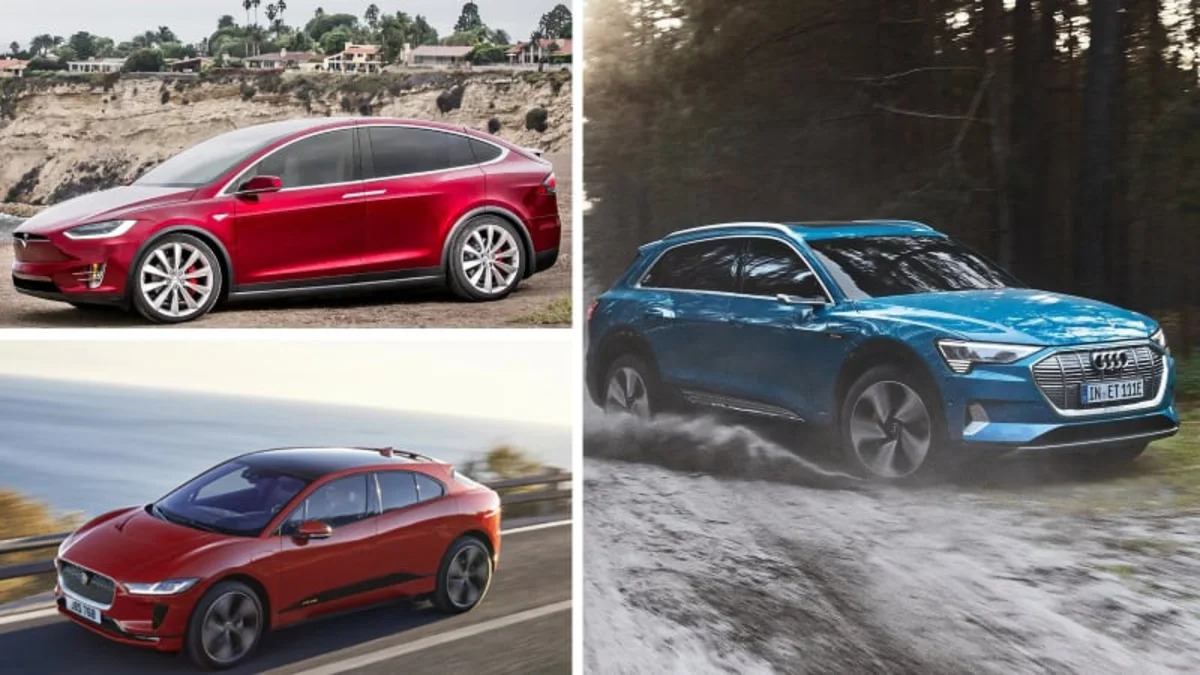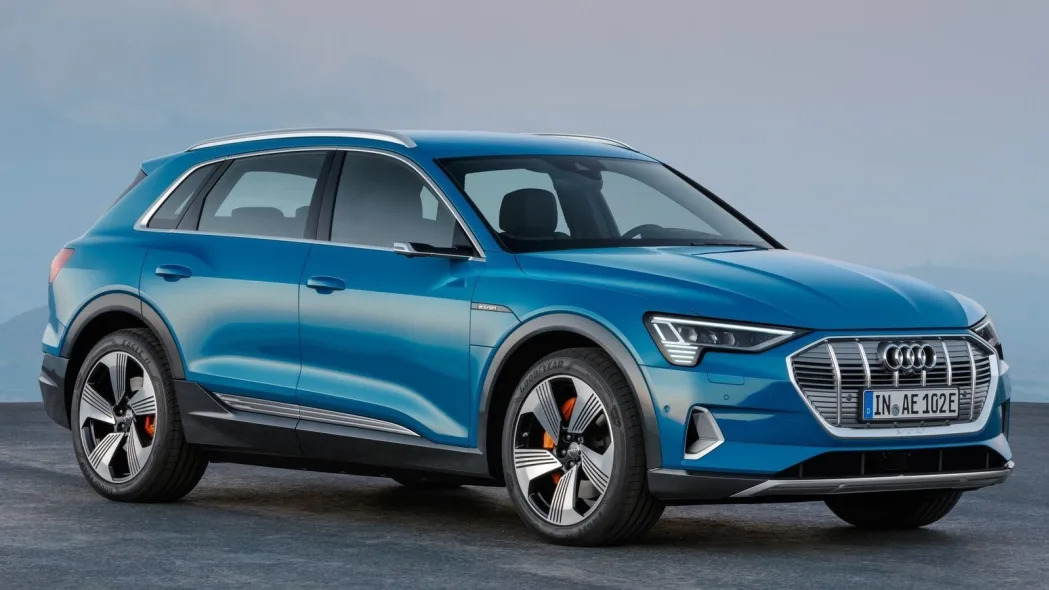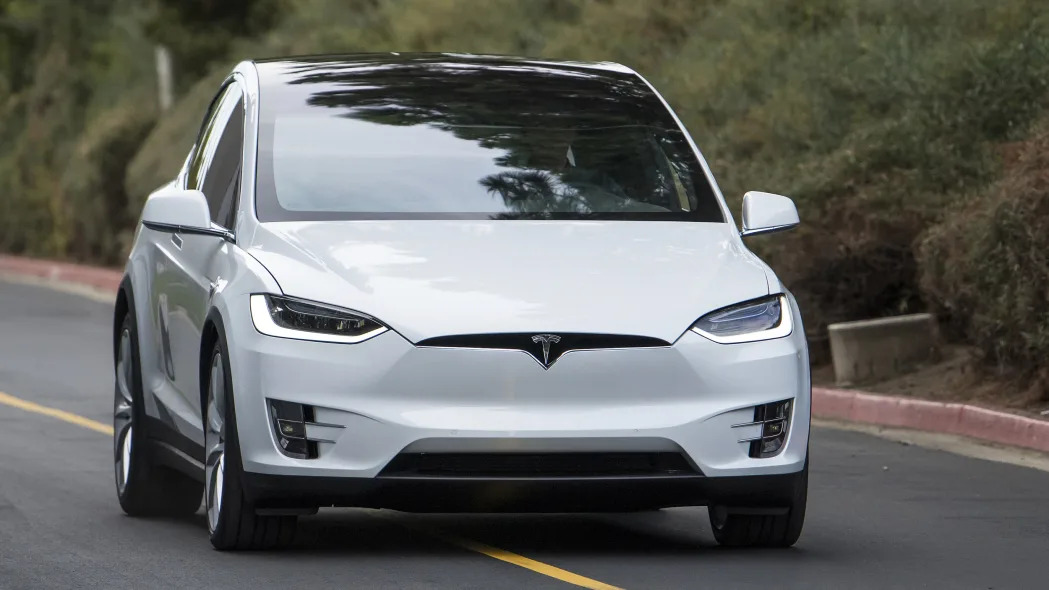The all-electric crossover segment is suddenly heating up. Tesla was first to market with its Model X, and the California-based automaker has a several-year head start on the rest of the field. But now it has competition, with the Jaguar I-Pace already hitting dealerships across the globe and the just-announced Audi E-Tron hot on their heels.
We decided to see how Audi's new entrant compares with its British and American rivals, so we downloaded their spec sheets (at least those that are available) and dumped them all into the spreadsheet you see below. As you'll soon find out, there are lots of similarities between these three electric crossovers, but each has a unique selling point or two with which to entice buyers.

We decided to see how Audi's new entrant compares with its British and American rivals, so we downloaded their spec sheets (at least those that are available) and dumped them all into the spreadsheet you see below. As you'll soon find out, there are lots of similarities between these three electric crossovers, but each has a unique selling point or two with which to entice buyers.

Performance
Note that we're using the Tesla Model X 75D for this comparison, since that's the model that is closest in price to the Jaguar and Audi entries. If you really want the fastest and most powerful electric CUV available, you're going to want to look at Tesla's ludicrous P100D model, but you'd better be willing to just about double the price you see in the chart above.With that out of the way, these particular electric crossovers are all pretty quick. The Jaguar boasts the quickest 0-60 time, but in the real world, that half-second advantage over the 75D won't amount to much. The Audi is a full second behind the Jaguar, and a little over a half second slower to 60 than the Tesla. A 5.5-second 0-60 time, though, still means the E-Tron will be able to squirt away from traffic lights quicker than the rest of the morning commuters.
As far as battery capacity, Audi leads the way with 95 kWh, which is 5 more than the Jag and a whopping 20 more than the Tesla. Until we get estimated range figures, though, we won't know what the extra capacity means in the real world. In other words, stay tuned.
Exterior and interior dimensions
The Jaguar is the smallest of these three 'utes, inside and out. The Tesla Model X is the largest. Does that make the Audi just right? Maybe, but only if you don't need a third row — the Model X is the only one of this trio that offers seating for six or seven passengers (depending on whether the buyer opts for a second-row bench or individual chairs).A smaller size may be a boon for drivers who often have to fit into tight spaces, but those slinky dimensions mean the Jaguar's cargo capacity is well behind that of the Audi and not even close to the cavernous Tesla.
Pricing
At $70,495 for a base I-Pace, Jaguar leads the pack in pricing, but that makes sense considering it's the smallest of these three electric utility vehicles. The Audi and Tesla are in a virtual dead-heat, each coming in a few Benjamins shy of $80,000. The Model X is available with more seating, which could be a boon for practicality, depending on a buyers' individual needs. The Audi E-Tron has the largest battery pack, but we don't yet know what that means for maximum driving range.One big factor to consider when it comes to pricing for electric vehicles are state and federal incentive programs aimed at increasing EV adoption. Now that Tesla has delivered more than 200,000 electric vehicles, the federal tax credit for Model X buyers will be cut in half from $7,500 to $3,750 starting on Jan. 1, 2019. The full $7,500 credit is still in effect for Audi and Jaguar, and will be for quite some time since those two automakers are just getting into the electrified game.
Related Video:





Sign in to post
Please sign in to leave a comment.
Continue